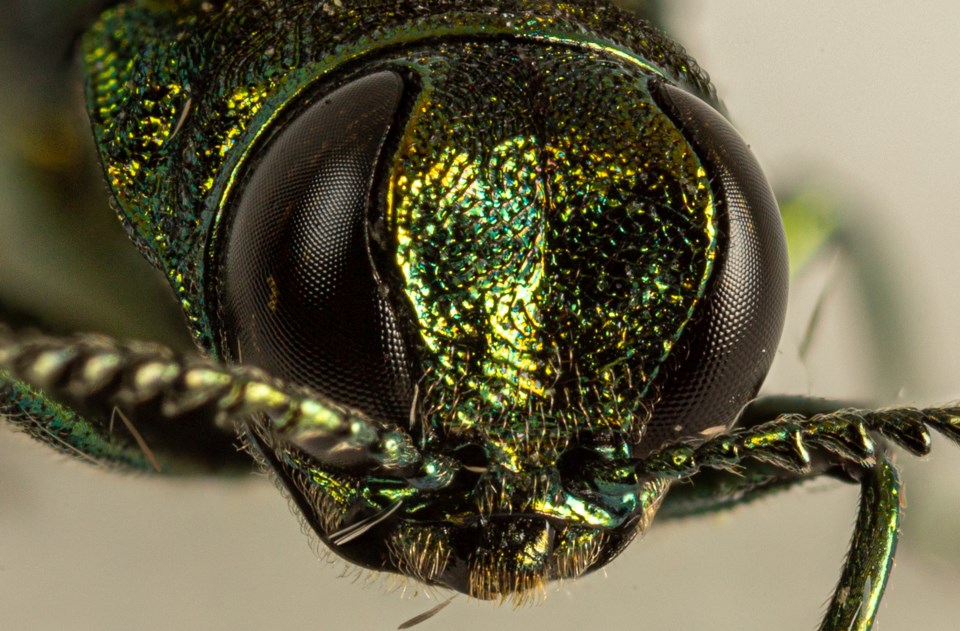Researchers at the Great Lakes Forestry Centre were involved in a study that determined emerald ash borer beetles are capable of withstanding extreme cold temperatures, much colder than was expected.
This particular study of the invasive species began after it was discovered in Winnipeg, Man. and many emerald ash borers were found to have survived a polar vortex event, said Chris MacQuarrie, part of the research team at Great Lakes Forestry Centre. He was reached by phone on Wednesday.
“That’s the farthest west it has been found in Canada and the furthest north in North America,” said MacQuarrie of the insect being found in Winnipeg. “It was a concern because ash is a big chunk of their tree population, so they are obviously concerned about it.”
That year, temperatures dropped to near -50 degrees Celsius in Winnipeg, a much colder temperature than emerald ash borers were previously thought to be able to survive.
MacQuarrie and Amanda Roe at the Great Lakes Forestry Centre worked with members of Western University’s Faculty of Science to determine if the insect had evolved or learned to adapt to the extreme cold.
The Western team was led by Brent Sinclair, who had worked with the Great Lakes Forestry Centre team on other aspects of emerald ash borer research. Previous research showed emerald ash borers collected near Barrie, Ont. died when the temperature dropped to about -28 C.
“We had known from some work that Brent had done years ago that emerald ash borer shouldn’t be able to survive in Winnipeg because of how cold it gets,” said MacQuarrie. “With the cooperation of the folks in Manitoba we were able to get some samples of these insects and they went down to Brent’s lab and he was able to use the equipment down there to see how much cold they could handle.”
“I was surprised they were in Winnipeg,” said Sinclair in a news release. “The cold tolerance of those animals is incredible."
The Winnipeg samples were split into two groups — one that was exposed to the southern Ontario winter in London, Ont. and a second that was subjected to an artificial cold, with some surviving at temperatures up to -50 C.
“They were freezing at an average of -46 °C, and some survived -50 °C. Their blood had so much glycerol in it as an antifreeze that it was more like Jell-O than blood,” said Sinclair of the group exposed to Winnipeg conditions.
The first group that was exposed to the southern Ontario winter were only able to withstand temperatures of about -30 C, even though the same group had been capable of withstanding the colder Winnipeg temperatures previously.
The results surprised researchers and MacQuarrie said they pointed toward adaptation rather than evolution.
“The Winnipeg bugs who had a southern Ontario winter could only handle about minus 30 again, but the ones who had a Winnipeg-style winter could handle these really cold temperatures,” said MacQuarrie. “This tells us there’s this plasticity, an ability to assess and adapt to conditions these Winnipeg bugs had and tells us they can handle a lot more cold than we ever expected.”
MacQuarrie said researchers will use to information to help plan and determine how many emerald ash borers are expected to survive each winter. The emerald ash borer is an invasive species that was first discovered in Ontario in the late 1990s, causing major ecological and economic impacts.
“What we are interested in with our research is assessing risk, we want to know what kind of risk this bug poses to Canada’s trees. We do that by collecting this kind of data and we give the information to people whose responsibility it is to manage those trees and keep them healthy,” he said.
